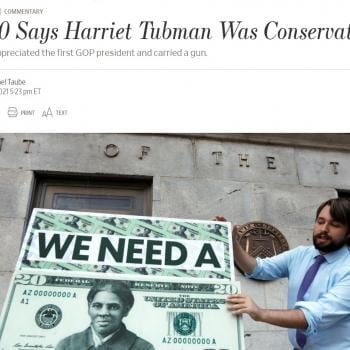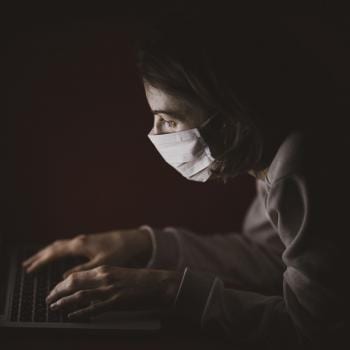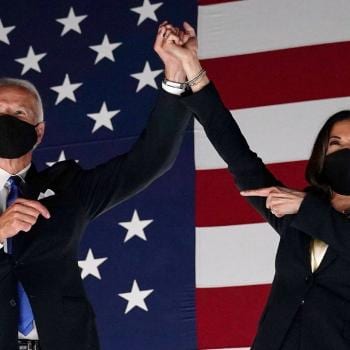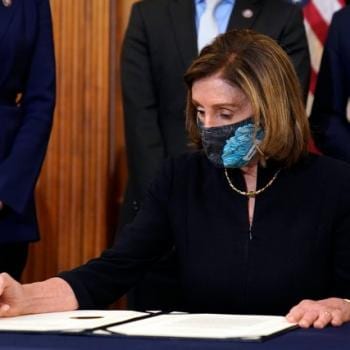So, this happened:
Jewish people would have been able to fend off the Nazis if not for gun-control laws imposed by the Third Reich, Rep. Don Young, a Republican from Alaska, argued last week.
“How many millions were shot and killed because they were unarmed?” Young asked at an event in Juneau, Alaska, before answering his own question. “Fifty million in Russia because their citizens were unarmed. How many Jews were put into the ovens because they were unarmed?”
This is an interesting question—what would have happened if the Jews had been armed?
It is worth pointing out that many Jews did own guns. When Hitler came to power, he went about confiscating these guns. Conservatives like to point out that the Weimar Republic kept a gun registry, and Hitler used this registry to disarm his enemies; however, historians counter that this registry was limited and incomplete and that in some cases Jews owned guns into the late 1930s. But let me ask this—what is to stop an oppressive totalitarian government from taking someone’s guns?
No lax gun control law in the world offers the guarantee that a dictator, should he arise, will not immediately change the law and begin confiscating their political enemies’ guns. But people can fight back, right? They can resist the confiscation of their guns? That segues nicely into my second point.
In 1930s Germany, having guns was not enough to protect one against Hitler. The Night of the Longknives, a purge by which Hitler consolidated power, occurred in 1934. In many cases those “purged” were members of Hitler’s own well-armed paramilitary forces. As Politifact reports:
Hitler’s [Night of the Longknives] crackdown [was] on a very specific group – the Sturmabteilung [brownshirts] that he had nurtured and encouraged to intimidate any group that stood in his way.
The paramilitary group’s leader [i.e. the brownshirts’ leader] Ernst Röhm was eager to consolidate his power, and that set him on a collision course with established leaders in the German military and Hitler’s top advisers. They persuaded Hitler that Röhm was planning a coup.
Over a span of several days, Röhm and scores of Sturmabteilung leaders were arrested and executed. The Nazis killed at least 85 people, most but not all associated with Röhm.
… the Nazi leaders knew full well that they were going up against a group that had plenty of weapons.
At one tense moment, a truckload of armed brownshirts drove up to the hotel where Röhm [their leader] was being arrested. According to Hitler’s chauffeur, Hitler himself walked up to the unit’s leader and told him to “drive back to Munich immediately!’ The man complied.
Being armed didn’t save Röhm from being purged. Also, not to state the obvious, but the countries the Nazis invaded also had guns—in fact, they had entire armies—and that didn’t stop Hitler.
Now, to be fair, various resistance movements did oppose the Nazis using guns. The 1943 Warsaw Ghetto Uprising is one example, and it initially found some success—until the Germans began systematically burning the ghetto. “We were beaten by the flames, not the Germans,” one of the survivors said in 2007. The 1944 Warsaw Uprising, in which Polish resistance fighters sought to free the city from Nazi occupation is another example. The Home Army had a collection of often-improvised weapons, but ultimately ran out of supplies—most importantly, food. The real problem, here, was political—the nearby Soviets refused to intervene or allow the U.S. to use their air bases to more efficiently drop supplies to the fighters.
So, yes, having guns absolutely helped if you were part of a resistance movement. Arguably, these resistance movements failed due to Germany’s willingness to burn the Warsaw Ghetto, in the first place, and the Home Army running out of food supplies, in the second. However, it didn’t help that these resistance movements faced superior firepower. Both were also hampered by a lack of supplies and support from outside of their movements. Resistance movements that were isolated were vulnerable.
Interestingly, the Jews who took part in the Warsaw Ghetto Uprising did obtain some small number of weapons from the Home Army, and the Home Army did receive a limited number of air drops from the Allied forces. It would have helped the Home Army especially if the Allied forces had been able to drop more supplies, including both food and additional weapons.
But these were both organized resistance movements. These were not individuals who happened to own firearms. The weapons the Home Army did have were obtained from a variety of sources, some stolen from the Germans, some buried by the Polish army and dug up later, and others received in Allied air drops. Young’s statement, remember, was this:
“How many Jews were put into the ovens because they were unarmed?”
Does it help to arm organized resistance efforts? Absolutely, yes. But what about individual citizens? There’s a difference there. As I noted before, Hitler confiscated guns from some German Jews while others continued to own guns into the late 1930s. But how exactly was that supposed to work? The SS shows up at your door and you shoot them? What happens then? The answer, unless I very much miss my guess, is they come back with more troops and shoot you and your family.
There was at least one German Jew who did use a personal handgun against the Germans. It didn’t end up going well.
In the fall of 1938, Herschel Grynszpan (1921-45), a 17-year-old ethnically Polish Jew who had been living in France for several years, learned that the Nazis had exiled his parents to Poland from Hanover, Germany, where Herschel had been born and his family had lived for years. As retaliation, on November 7, 1938, the agitated teenager shot Ernst vom Rath (1909-38), a German diplomat in Paris. Rath died two days later from his wounds, and Hitler attended his funeral. Joseph Goebbels (1897-1945), the Nazi minister for public enlightenment and propaganda, immediately seized on the assassination to rile Hitler’s supporters into an anti-Semitic frenzy.
Kristallnacht was the result of that rage. Starting in the late hours of November 9 and continuing into the next day, Nazi mobs torched or otherwise vandalized hundreds of synagogues throughout Germany and damaged, if not completely destroyed, thousands of Jewish homes, schools, businesses, hospitals and cemeteries. Nearly 100 Jews were murdered during the violence. Nazi officials ordered German police officers and firemen to do nothing as the riots raged and buildings burned, although firefighters were allowed to extinguish blazes that threatened Aryan-owned property.
Oppressive governments are not overthrown by individuals wielding guns. They are overthrown by organized resistance movements with support from the outside. Those resistance efforts usually obtain firearms from a variety of sources, including from outside allies and from defected military troops, or raids. While I’m certain it doesn’t hurt to have the few extra handguns or rifles it might bring, these movements are typically not dependent on individuals owning firearms before the conflict.
Suggesting that owning personal firearms would have protected the Jews against the Holocaust demonstrates a complete lack of understanding of history, military strategy, and political science, among other things.
I have a Patreon! Please support my writing!















